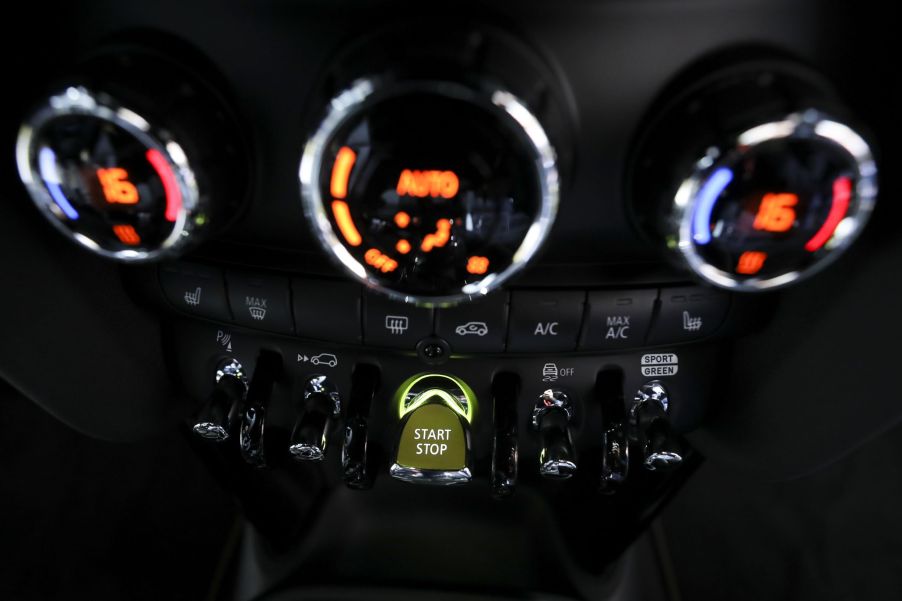
Is the Ignition Switch Broken on Your Push-Button Start?
Like several modern features, keyless ignition—aka ‘push-button start’—is sometimes taken for granted. No need to fumble with the keys; just press and go. It’s very convenient…right up until it stops working. When that happens, the ignition switch is sometimes the culprit. However, considering more complicated maintenance is often the cost of increased convenience, is fixing it as simple as on a car with a key?
What does an ignition switch do?

Regardless if your car has a push-button start or an ignition key, it has an ignition switch. It’s “one of the most important…components of any vehicle’s ignition system,” Autoblog reports. Without it, you wouldn’t be able to turn on your lights, audio system, or, naturally, start your car, AA1Car explains.
Your car’s ignition switch works much like a wall-mounted light switch. When you turn the key or press the start button, it completes a circuit between the car’s battery and the starter motor, ItStillRuns explains. This lets electricity flow through the starter and the rest of the ignition system, which fires up the engine.

However, the ignition switch doesn’t just turn on the engine. It’s a multi-position switch, which is why you can turn on the radio without burning any fuel. Instead of sending power from the battery to the starter, the switch sends the power to the electrical accessories.
Does the ignition switch work differently if you have a push-button start instead of a key?

Interestingly, many antique cars have both an ignition key and a starter button. That’s because, rather like a key to a lock, the first car keys locked out the car’s ignition system so it couldn’t be stolen, Technology.org explains. It wasn’t until 1949 that the twist-key system was put in place, Car and Driver reports.
Modern ignition switches, though, aren’t mechanical, but electronic, Autoblog explains. And they’re not technically switches so much as ‘starter relays,’ Autoblog reports. As such, while the starting procedure is broadly the same, push-button start systems are more computerized.
When you get into the car, the fob sends a coded signal to its main computer, RepairPal explains. This lets the car know it’s OK to start. Once you push the start button, the computer then checks if all the other starting conditions have been met, AA1Car reports. Usually, that means being in Park or Neutral and having your foot on the brake pedal. Then, the computer activates the starter motor via the starter relay.
How can you tell if it’s broken, and what can you do about it?
Whether you have a mechanical ignition switch or a push-button start starter relay, both can and do fail, Autoblog reports.
Mechanical switches, including the ignition lock assembly, simply wear out over time, Autoblog explains. If your car suddenly stalls while you’re driving, refuses to start, and/or starts but immediately stalls, your ignition switch is faulty, YourMechanic reports. Other symptoms include difficulty removing or putting in the key and trouble turning on the accessories.
Mechanically, push-button start systems are simpler, but they have their own failure modes. For example, the fob’s battery can die, or the fob can de-sync from the car, The Drive reports. And the starter relay isn’t a digital component; it has mechanical parts that can break, Autoblog explains. Once that happens, you’ll experience the same symptoms noted above.
Ignition switches, once they fail or start failing, need to be replaced. If you’re mechanically inclined, you can do this at home with little more than some screwdrivers and pliers, The Drive reports. But before you do, check to see if it is the ignition switch that’s the problem and not, say, the starter motor. And if you have a push-button start system, replace the fob/remote batteries and try to re-sync it first.
Follow more updates from MotorBiscuit on our Facebook page.


